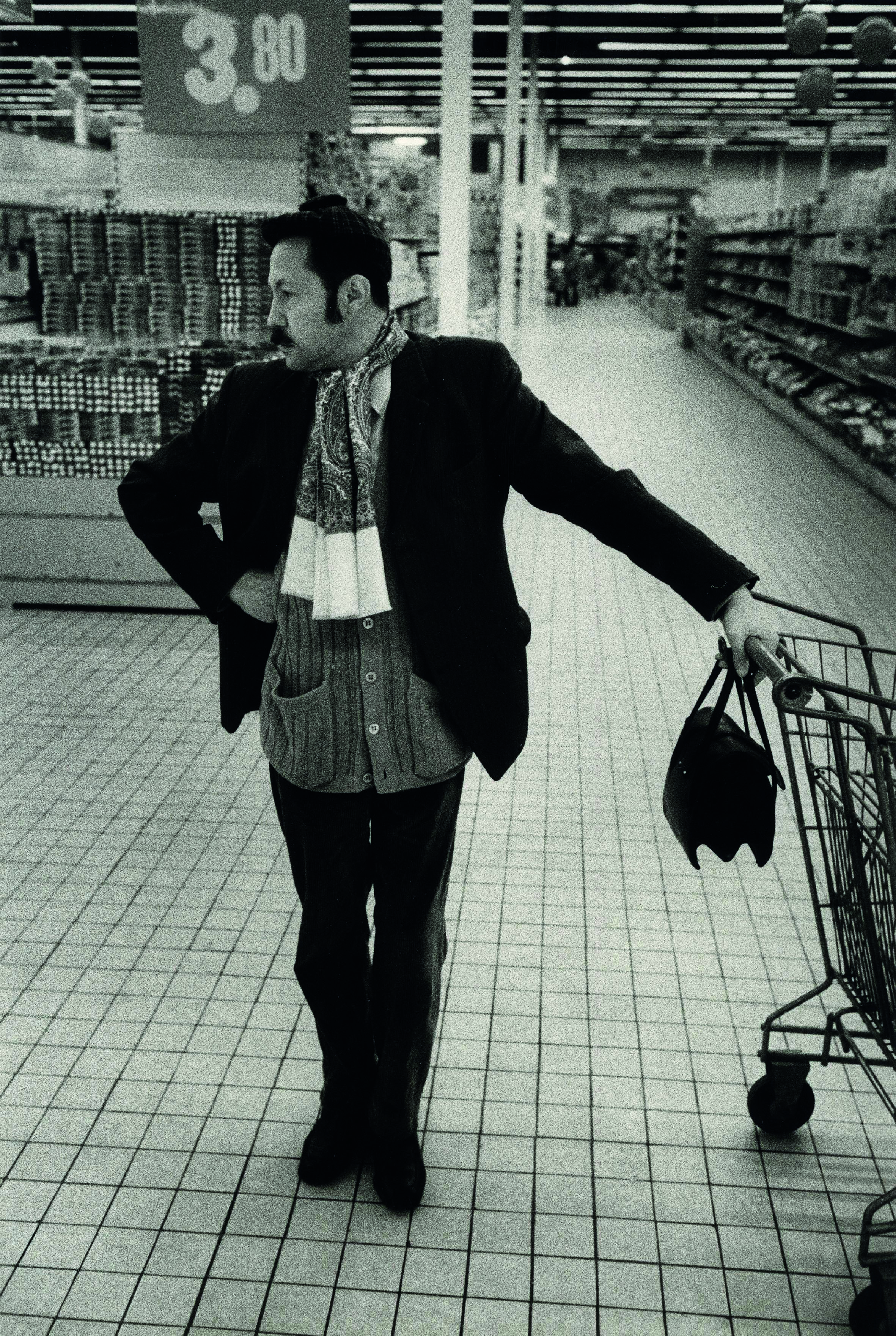Writer Annie Ernaux’s works are brought to photographic life in Paris
‘Exteriors’ explores Annie Ernaux’s writing in relationship to photographic mediums, at Maison Européenne de la Photographie until 25 May 2024

‘I felt the urge to transcribe the scenes,’ writes French author Annie Ernaux in her 2021 book Exteriors, which takes the form of random journal entries and won the Nobel Prize in Literature the following year. ‘Words and gestures of unknown people, who are never to be seen again, graffiti scribbled on walls, no sooner dry than hastily erased; sentences overheard on the radio and news items read in the papers. Anything that, in some way or another, moved me, upset me or angered me.’
The product of an April 2022 research residency by curator and writer Lou Stoppard, the new photography exhibition ‘Exteriors’ at Maison Européenne de la Photographie in Paris (until 25 May 2024) offers a considered exploration of the relationship between Ernaux’s written works and photographic mediums. Spanning from the 1940s to 2021 and countries including France, the USA, Italy, Japan, Singapore and the UK, the showcased images bring to life the universal themes prevalent in Ernaux's writing and the juxtaposition between public façades and private realities.
‘Exteriors’ explores Annie Ernaux’s writing through photography

Bernard Pierre Wolff, Shinjuku, Tokyo, 1981. Gelatin silver print.
Through the work of renowned photographers including Harry Callahan, Claude Dityvon, Dolorès Marat, Daido Moriyama, Janine Niepce, Issei Suda, Henry Wessel, and Bernard Pierre Wolff, the exhibition vividly emboldens Ernaux's experiments in describing ‘reality as through the eyes of a photographer’, preserving ‘the mystery and opacity of the lives’ she encounters.
As much of the book Exteriors is observed from trains, the photographs in the exhibition focus on those fleeting, transitory moments between coming and going. Hiro’s Shinjuku Station, Tokyo (1962) shows commuters packed on a train like sardines, pressed against one another, their gaze turned outwards. Schulz-Dornburg’s Ploshchad Vosstaniya – Uprising Square, Saint-Petersbourg (2005) and Marat’s La femme aux gants (Woman with gloves) (1987) see figures going down an escalator at metro stations.

Jean-Philippe Charbonnier, «Où qu'c'est qu'elle est passée », Carrefour, Villiers-en-Bière (“Where on earth did she go?”, Carrefour, Villiers-en-Bière), 1973, Gelatin silver print
For Ernaux, these sites serve as meeting points for all walks of life to briefly intersect with one another. The work of photographers Garry Winogrand, Luigi Ghirri, Richard Kalvar, and William Klein similarly features supermarkets, hairdressers, and cafés, reconfiguring Ernaux’s observations of the everyday rituals of travel and consumption into a poignant inquiry into class and gender performance.
Perhaps, though, the most compelling aspect of ‘Exteriors’ is the images' ephemerality; how they capture people and places at pivotal points in time. Marguerite Bornhauser’s image of broken glass, for instance, shows the aftermath of the Paris terror attacks in 2015. This dark undercurrent echoes throughout the show – in the case of Mohamed Bourouissa’s L’impasse (2007), his work shows the strange dissonance between different urban spaces and Parisian suburbs.

Dolorès Marat, La femme aux gants (Woman with gloves), 1987,
Fresson four-colour pigment print
As with Ernaux’s book, the images of ‘Exteriors’ invoke a suggestion of comparison of ourselves through how we view others. We might best think of the curatorial interplay between word and image as the product of flâuner-ism. ‘It seems to me that within this work, photographs are not treated as a subject matter or prompt,’ says Stoppard. ‘Instead, the texts seem to actually become photographs; objects, within a frame, which the reader – or viewer – can both observe and step into. One is both distant and involved, seeing and imagining, present and recalling.’
Wallpaper* Newsletter
Receive our daily digest of inspiration, escapism and design stories from around the world direct to your inbox.
‘Exteriors’ is at Maison Européenne de la Photographie, Paris, until until 25 May 2024

Janine Niepce, H.L.M. à Vitry. Une mère et son enfant (Council estate in Vitry. A mother and her child), 1965. Gelatin silver print

Mohamed Bourouissa, L’impasse (The impasse), 2007, from the series Périphérique. C-type print
Katie Tobin is a culture writer and a PhD candidate in English at the University in Durham. She is also a former lecturer in English and Philosophy.
-
 Marylebone restaurant Nina turns up the volume on Italian dining
Marylebone restaurant Nina turns up the volume on Italian diningAt Nina, don’t expect a view of the Amalfi Coast. Do expect pasta, leopard print and industrial chic
By Sofia de la Cruz
-
 Tour the wonderful homes of ‘Casa Mexicana’, an ode to residential architecture in Mexico
Tour the wonderful homes of ‘Casa Mexicana’, an ode to residential architecture in Mexico‘Casa Mexicana’ is a new book celebrating the country’s residential architecture, highlighting its influence across the world
By Ellie Stathaki
-
 Jonathan Anderson is heading to Dior Men
Jonathan Anderson is heading to Dior MenAfter months of speculation, it has been confirmed this morning that Jonathan Anderson, who left Loewe earlier this year, is the successor to Kim Jones at Dior Men
By Jack Moss